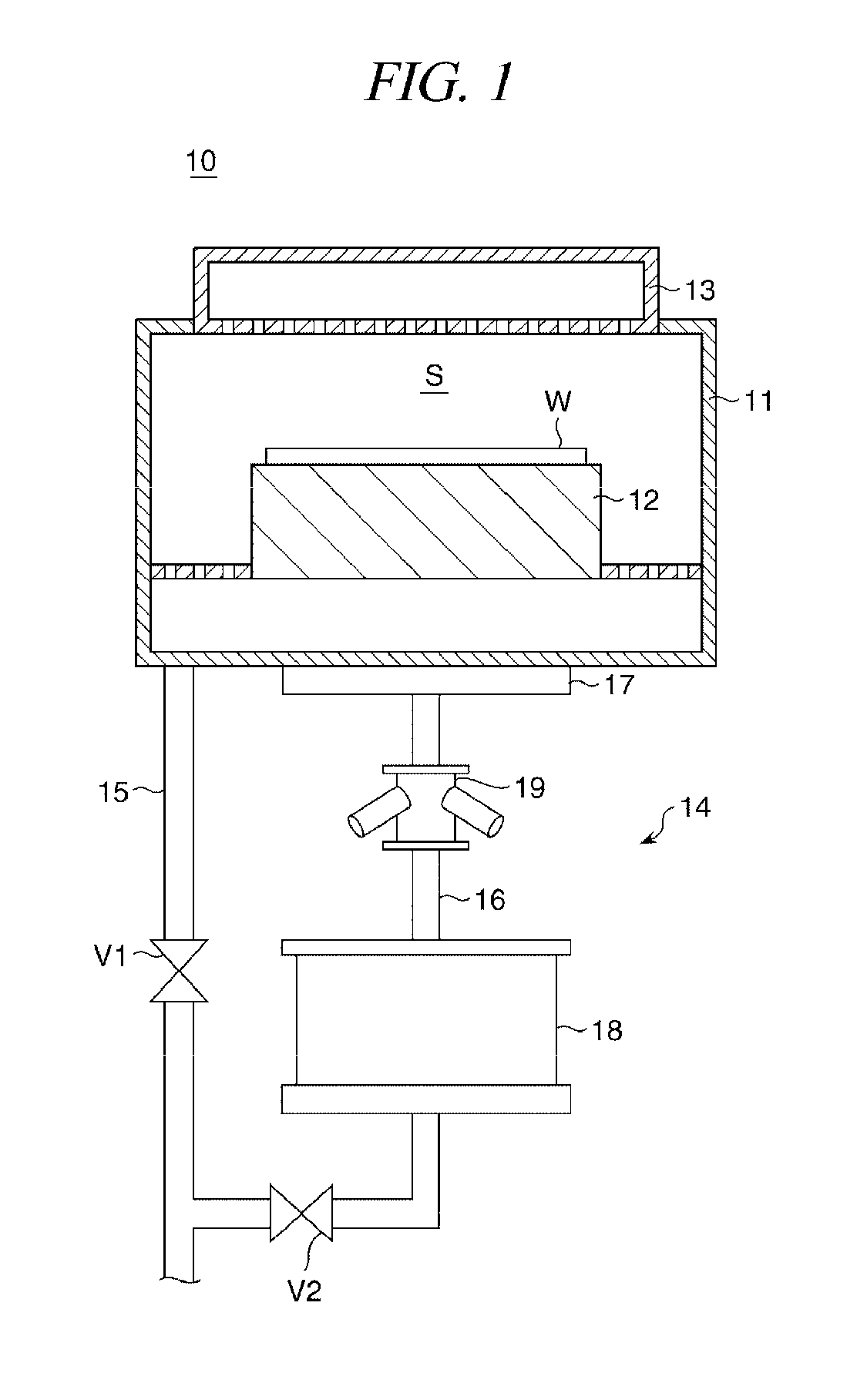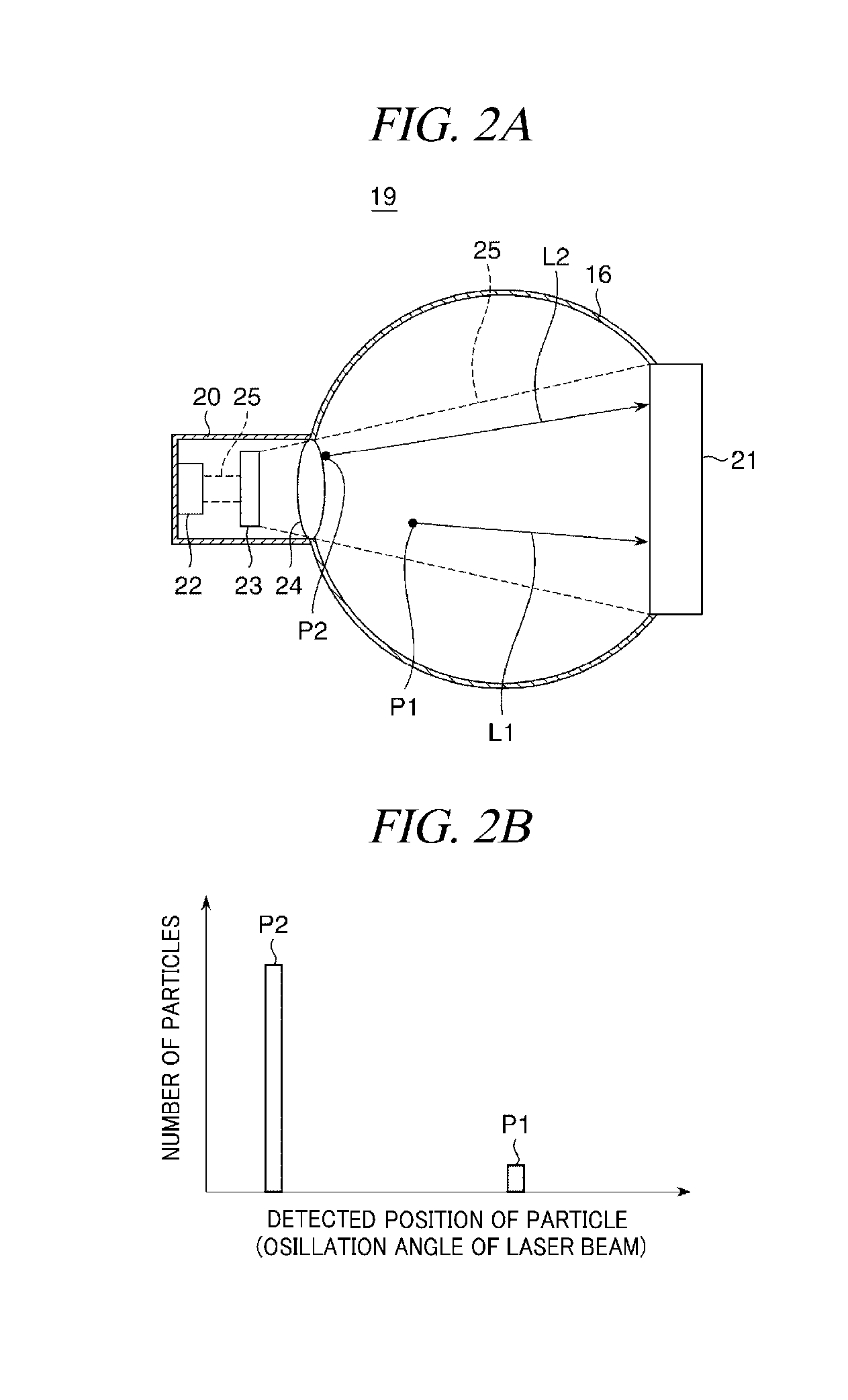Particle number measurement method
- Summary
- Abstract
- Description
- Claims
- Application Information
AI Technical Summary
Benefits of technology
Problems solved by technology
Method used
Image
Examples
first embodiment
[0036]First of all, a particle number measurement method in accordance with the present disclosure will be described.
[0037]FIG. 1 is a cross sectional view schematically showing a configuration of a substrate processing apparatus to which the particle number measurement method in accordance with the embodiment of the present disclosure is applied. This substrate processing apparatus performs a plasma etching process on a wafer for a semiconductor device (hereinafter, simply referred to as a “wafer”) as a substrate.
[0038]Referring to FIG. 1, a substrate processing apparatus 10 may include a processing chamber 11 for accommodating a wafer W. A cylindrical susceptor 12 is provided in the chamber 11, and a circular plate-shaped shower head 13 is disposed at an upper region within the chamber 11 so as to face the susceptor 12. Further, a gas exhaust system 14 for evacuating the inside of the chamber 11 is connected to the substrate processing apparatus 10.
[0039]The susceptor 12 has there...
second embodiment
[0070]Hereinafter, the particle number measurement method in accordance with the present disclosure will be described.
[0071]This embodiment has the same configuration and operation as those of the first embodiment except in that the type of particles to be excluded from the measurement is different. Therefore, redundant explanation of the same configuration and operation may be omitted, and the different configuration and operation will be described hereinafter.
[0072]Recently, as for a method for removing particles from the inside of a chamber of a substrate processing apparatus, an NPPC (Non Plasma Particle Cleaning) sequence (particle removing process) which does not use plasma is employed (see, e.g., Japanese Patent Laid-open Publication No. 2005-317900). In the NPPC sequence, particles are detached from the components within the chamber by a gas impact force, a gas viscous force and an electromagnetic stress and then discharged from the chamber.
[0073]FIG. 5 is a flowchart of the...
PUM
 Login to View More
Login to View More Abstract
Description
Claims
Application Information
 Login to View More
Login to View More - R&D
- Intellectual Property
- Life Sciences
- Materials
- Tech Scout
- Unparalleled Data Quality
- Higher Quality Content
- 60% Fewer Hallucinations
Browse by: Latest US Patents, China's latest patents, Technical Efficacy Thesaurus, Application Domain, Technology Topic, Popular Technical Reports.
© 2025 PatSnap. All rights reserved.Legal|Privacy policy|Modern Slavery Act Transparency Statement|Sitemap|About US| Contact US: help@patsnap.com



